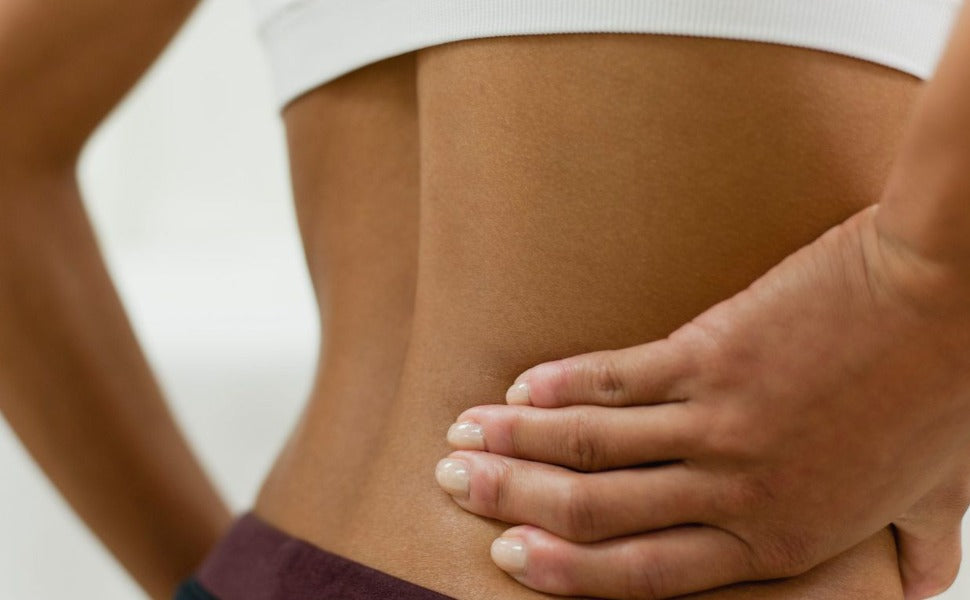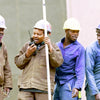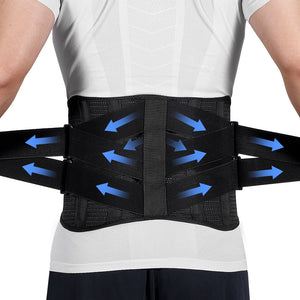When Do Lower Back Braces Stop Hurting

mild pain may experience relief within a few hours, while severe issues may require weeks. Consistently wearing the brace correctly for 4-6 hours a day, adjusting the tightness, avoiding muscle dependency, and combining it with core strengthening exercises can accelerate the results.
Why Use a Lower Back Brace
The primary function of a is to provide extra support to the lower back, which may help in reducing pain and promoting healing. Whether through chronic lower back pain caused by poor posture, unexpected injuries, or strained muscles from athletic strains, a back brace can help reduce stress on muscles and joints. Braces help keep the spine aligned properly for those people who have weak lower back muscles, including elderly individuals and office workers who lead sedentary lives, thus reducing detrimental effects of poor posture.
Back braces also serve as protective devices for individuals that lift heavy things quite often. During everyday activities, the lower back usually receives improper force distribution, and the brace can limit excessive movement and avoid further injury. Thus, the role of a brace is not just that of a recovery tool but also that of a preventive device.
The lower back brace is an important aid in the rehabilitation process for persons recovering either from surgery or from spinal injuries. It minimizes irritation of the injured area during movement, enabling the patient safely to perform daily tasks without unnecessary pain or recurrence of inflammation.
How Braces Relieve Pain
The main ways braces take away the pain are by and aiding the spine to remain in its natural place. When the spine is aligned, pressure on the discs, muscles, and ligaments is more evenly distributed; thus, pain due to concentrated stress is dispelled. This is very helpful, especially when someone has to sit or stand for a very long time, as the support from a brace can substantially decrease lower back muscular fatigue.
Braces limit excessive range of motion, not allowing further stresses from frequent bending, twisting, or other movements. This is very important in people with chronic pain or fresh traumas to give the lower back more time to rest. In addition, braces may help improve local blood circulation through light compression, reducing inflammation and stiffness.
Equally important is the psychological support that braces can provide. People who wear a brace tend to be more aware of their posture and avoid the repetition that causes pain. In other words, a brace is not only a physical device but also one for developing better habits.
:max_bytes(150000):strip_icc()/GettyImages-1409664434-ae4362bcdf9041d08c62c9d9f1bae9cc.jpg)
Types of Lower Back Braces
There are several types of lower back braces, all designed for specific purposes and goals. The most common are flexible braces made from elastic materials, mainly used for mild support and posture correction. Flexible braces would work for people who need a little more support while going about daily activities, like office workers who have to sit for a very long time in front of their computers. These braces are lightweight, comfortable to wear, and help rid one of mild pain caused by muscle fatigue.
Rigid braces are more suitable for cases of herniated discs, recovery after surgery, and fractures of the vertebrae. Rigid braces, which are usually made of plastic or metal, give strong stability to the lower back, restricting its movements. While somewhat bulky, they are crucial for patients needing stern immobilization.
There are also sports braces that are designed to offer support with continued flexibility. Such braces are most ideal for athletes or persons who require high levels of activities. They are often made from breathable materials, helping to prevent sports-related lower back injuries without compromising performance.
How Long Does It Take to See Results
Results from a brace on the lower back vary in time, which depends on different circumstances and how the brace is used. For patients with minor back pain or poor posture, the effects of the brace may be visible in several hours or even on the same day, provided the pain has occurred because of muscle fatigue. On the other hand, for chronic conditions or severe injuries, it may take weeks or even months before appreciable improvement can be observed.
Correct usage means faster results. It should fit snugly against the lower back but not too tightly, because that could constrict circulation or just be painful. The second important key is consistency. Wearing the brace only when it hurts and forgetting about protection when it does not hurt can seriously diminish its effectiveness.
It is essential to recognize that a brace is not a "magic fix." The purpose of the brace is to create a stable environment in which muscles and tissues in the lower back can heal. Typically, the use of a brace in conjunction with the proper exercises and rehabilitation therapy produces better results.
Daily Wear Guide
A lower back brace will only be effective and have a decrease in possible side effects if worn correctly. Generally, doctors allow patients to wear the brace no more than 4 to 6 hours per day to avoid muscle dependence. It should support muscles, not completely replace them. If one overuses this device, the muscles of the lower back could be weakened, delaying recovery.
Wear the brace so that it is snug against the lower back. Adjust the tightness as needed for comfort. If too tight, the brace could cause discomfort and even skin pressure sores. If too loose, it will not provide sufficient support. It’s recommended to wear the brace during activities that place stress on the lower back, such as prolonged standing or heavy lifting, and remove it during rest or sleep to allow the lower back to relax naturally.
While using a brace, keep good habits going like making frequent movement breaks, avoiding prolonged sitting, and maintaining proper standing and sitting posture. Combine the brace with healthy living for the best protection of the lower back.
Common User Experiences
The most common reaction that people feel when they wear a lower back brace for the first time is "tightness" in the lower back. It may take some time to get used to it, but at the same time, this tightness provides a sense of support. This support may provide considerable relief from constant back pain.
Other users also complain of minor discomfort, including stiffness or skin itchiness, after using the brace continuously for extended periods. These problems often arise from incorrect adjustments or wearing the brace too long. Changes in time and tightness usually resolve these problems.
Others have testified to better lower back strength and mobility after some weeks of constant use. However, for a few users, it may be less effective; this is probably because they used it wrong or the kind of brace was not suitable for the conditions that existed. Effectiveness lies with choosing the appropriate type of brace and following recommended guidelines on use.
Maximizing the Effectiveness of the Stent
To see great benefit from a lower back brace, one must first . There are different braces suited for targeting different issues and uses, and using the wrong kind may simply reduce effectiveness. Equally paramount is proper wearing and adjustment in the brace's tightness. A brace that is too loose reduces support; one worn too tight could lead to discomfort or restrict circulation.
While in the brace, train with some basic stability exercises to strengthen the core muscles while in the brace. These will strengthen your lower back and reduce the dependency on the back brace over time. Lastly, refrain from overactive behavior or prolonged static positions because of your lower back.
Good hygiene practices should also be maintained. Clean the brace regularly to keep it fresh and dry to avoid irritation or allergic reactions in the skin. Lastly, be patient and persistent. The effects of a brace are gradual; they build up over time. If the right methods of use are followed consistently, the brace will be a trusted helper in protecting the lower back.
-
Posted in
Brace














